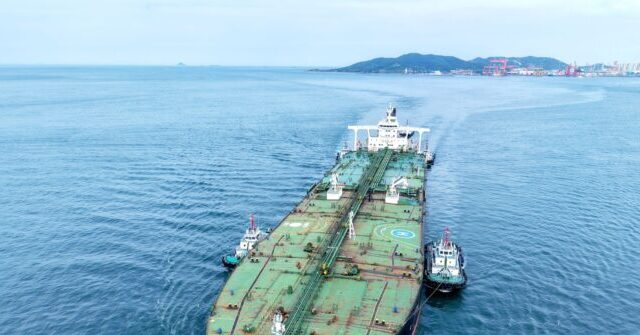Oil prices rose in early electronic trading Sunday evening as investors digested the impact of U.S. airstrikes on Iran’s nuclear facilities—a direct escalation that injected new geopolitical risk into energy markets and reignited concerns over Middle Eastern supply.
Brent crude, the international benchmark, surged as much as 5.7 percewnt to top $81 per barrel before settling near a 2.2% gain, trading around $78.80 as of early evening. West Texas Intermediate gained 2.4 oercewnt to about $75.60. Both benchmarks spiked following the news of the strikes and then eased as markets awaited Tehran’s response.
President Donald Trump announced Saturday that U.S. forces had struck the Fordow, Natanz, and Isfahan nuclear sites in Iran. The strikes marked Washington’s first direct military action in the Iran–Israel conflict. The president warned of further strikes if Iran failed to stand down.
Iran’s government has responded cautiously. State outlets reported that officials said the country reserved “all options,” and that parliament had passed a motion calling for the closure of the Strait of Hormuz. While the decision rests with Iran’s national security council and Supreme Leader Ayatollah Ali Khamenei, the possibility pushed risk premiums higher.
The Strait of Hormuz remains a global choke point: roughly one‑fifth of the world’s crude flows through it. Even a brief disruption could significantly tighten supplies.
Backing that concern, Brent’s front‑month contract structure moved into steeper backwardation, with the prompt spread widening to nearly $2—signaling traders expect tighter near‑term supply. Options activity and freight rates have also surged in recent days.
Analysts warn that Tehran may retaliate indirectly—through its regional proxies or by targeting oil infrastructure in neighboring Gulf states, or by escalating maritime attacks in the Red Sea. In 2019, Iranian-linked forces were blamed for strikes on Saudi Arabia’s Abqaiq facility, briefly knocking out around 5% of global production.
For now, Iranian oil exports—mainly to China—and shipments from Kharg Island appear to be flowing uninterrupted. But traders remain cautious, aware that a strategic disruption could overwhelm global supply buffers.
U.S. officials, including Secretary of State Marco Rubio, have cautioned Iran against closing the Strait, warning it would amount to “economic suicide,” noting that Iran’s own economy and exports depend on the waterway.
The oil-market reaction will hinge on Iran’s next move. If Tehran refrains from escalation, much of the risk premium may evaporate. However, any move to close the Strait, target foreign oil facilities, or weaponize maritime routes could send prices sharply higher—potentially toward $100 or more.
Despite the geopolitical shock, the modest scale of the rally suggested traders were not yet pricing in a prolonged disruption to global supply—or doubted that Iran would escalate in a way that threatens oil flows.
Read the full article here


